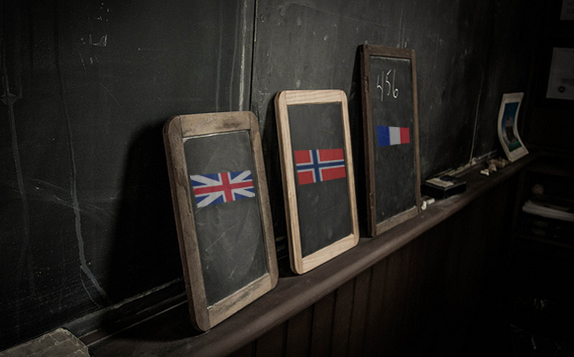Editor's note: This is part three of a four-part series examining the plight of education in New Mexico. Read Part I and Part II.

The encounter occurred on the first day of school. He was a principal, a leader in his school district, well known and widely respected. She was a new teacher who had just earned two degrees at UNM following an unusual career as a coal miner in Alabama and a teacher in India.
“Are you wearing underwear?” the principal challenged her.
“I am a 50-year-old-woman,” the broad-shouldered, self-confident woman responded, deeply affronted. “Yes, I am wearing underwear.”
After his insult, the relationship between these two educators, both of whom contributed valuably to their school and could have helped each other, never recovered.
Much in education is not what meets the eye, and much is not simple. Little is all black or all white. This principal was noted for his administrative skills and his willingness to communicate with students. I walked the school’s corridors with him and listened as students voluntarily told him of problems they and their classmates were having. Yet, in other aspects of his job, such as communicating with teachers, he could be a total idiot.
Had this woman been less tough, less resilient or less self-confident, that encounter might have ended her teaching career. But she went out to make contributions in a variety of settings, including a school on an Indian reservation and a path-breaking charter school.
There are a lot of panaceas for the ailments of American education, many of them drawn from European experiences. It is hard, however, to transfer educational policies across the Atlantic or the Pacific. It is even hard for an American to make sense out of what is happening over there.
Norwegians, with one of the better educational systems, are unhappy with what they have and have introduced extensive reforms. One of the most significant is to give students greater input into the system, but many teachers believe this change actually lowers the quality of education as well as making their lives miserable.
The British have found ways of closing the gap between the middle class and immigrants, but not the gap between the native lower and middle classes.
French and British parents are deeply involved in their kids’ education although the kids are generally more mature than their American peers.
Nevertheless European students mature sexually at an older age, date less and do fewer drugs. They drink more, and often do so legally, but they get drunk less. Families are more tightly knit even though marriage is an endangered species; most young couples in Europe seem to regard a marriage license as an intolerable or at least unnecessary infringement of their freedom by the state. Most mothers work because free daycare is widely available. Due to yearlong maternity leaves, they get to spend more time with newborns.
Placement in elite schools is highly competitive although European societies pride themselves on shunning the dog-eat-dog competitiveness of the United States. The class system survives in some form or other in most countries, but in Germany, for example, there is nothing humiliating for a student to choose training as a skilled blue collar worker in construction or in manufacturing rather than studying liberal arts or science at a university. Although continental (and Asian) high schools are often superior to their American counterparts, all of the world’s best research universities are in the United States or Britain.
The paradoxes are endless. While Europe and Asia can teach us some things, particularly successful education systems in countries such as Finland, Japan and Singapore, their experience cannot simply be transferred to our own very different society.
A longtime and thoughtful teacher in several Norwegian high schools sent me these thoughts:
After Norway scored poorly on international tests, politicians decided that kids weren't learning enough and so a series of tests at different levels have been introduced. I am totally against these tests as they measure only one aspect of learning and I think schools can unconsciously or consciously change their teaching to get better scores. Also these scores don't measure such things as reflection or cooperation.
Many teachers think too that schools have veered to marketing strategies where you try to produce more, faster. There is so much focus on ‘results’ that learning and ‘social skills’ seem to have been overlooked. Many teachers too feel that learning has become ‘instrumental.’
A school director that I have worked for is especially guilty of many of the things I say here. She is extremely ambitious. Principals' salaries have been directly tied to ‘results.’
Many teachers are also frustrated because we have to give so much feedback to the kids that we don't have time for preparation. There is a whole series of written feedbacks that we must give several times a year. In one high school we were forced to give each student at least three ‘areas of improvement’ times 100 kids—you do the math.
My biggest gripe is that we have lost a humanistic view of education and replaced it with a measurable, instrumental view. On the whole I do think most teachers are frustrated by all the directives that come from above.
If you notice parallels between Norwegian and New Mexico schools, you are not alone.
Teachers and principals come in many sizes and qualities, and they are only some of the many players in the education system. For the system to work well, all of the players, from students to lawmakers, from teachers to the governor, from parents to school board members, must do their job, a halcyon state of affairs that is seldom seen in New Mexico.
(Photo by Todd Petrie / CC)




Responses to “Education in New Mexico, Part 3: Comparative Paradoxes”